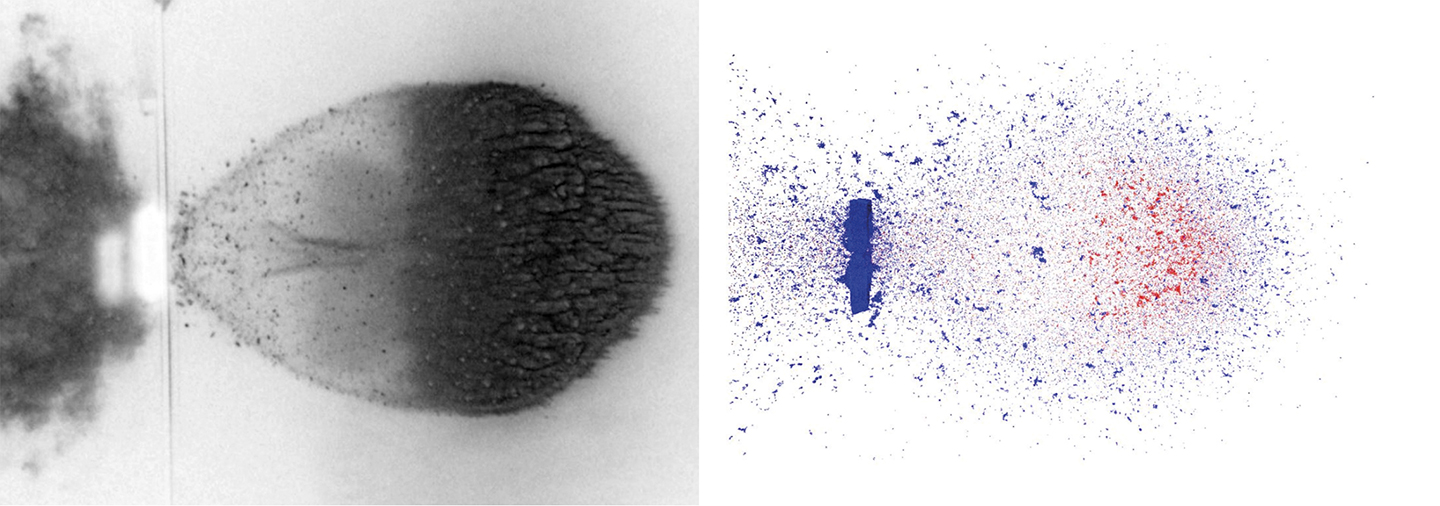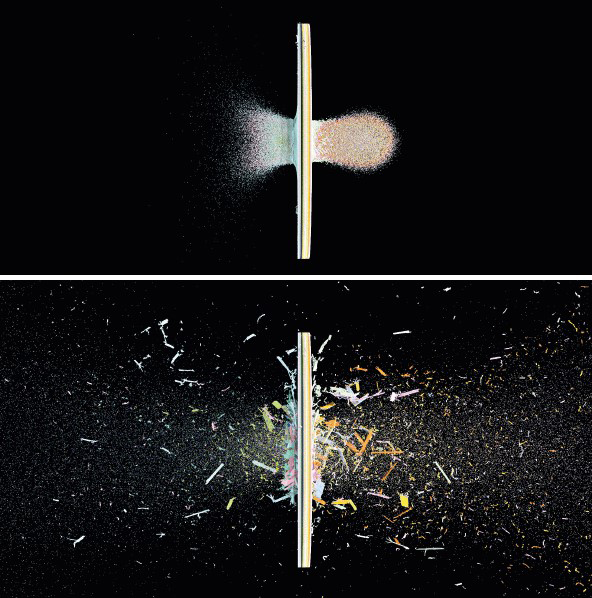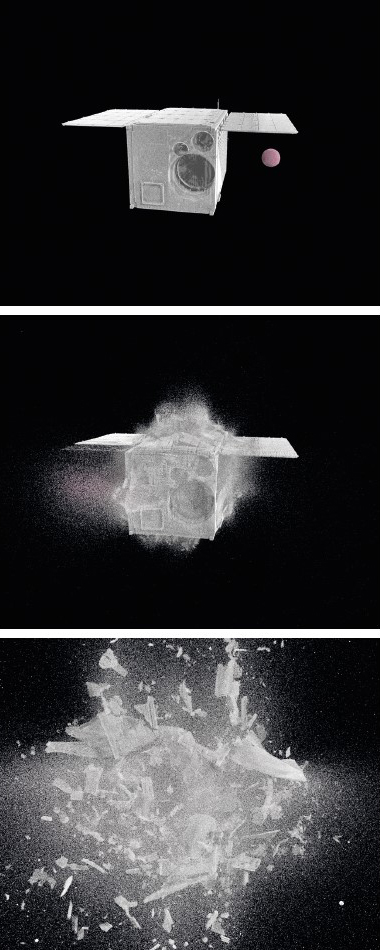The impact of a piece of space debris and an orbiting satellite usually results in the breakup and fragmentation of the satellite into thousands of new fragments of space debris. This complex phenomenon is being studied with a unique type of numerical simulation based on millions of small particles.
The increasing number of spacecraft launches in recent years continues to exacerbate the risks space debris poses to satellites around Earth’s orbits. A worst-case scenario, known as the Kessler syndrome, predicts a cascade of collisions as space debris impacts spacecraft causing catastrophic breakups. The fragments generated from such collisions join the growing quantity of space debris, each event further increasing the probability of more collisions. This ever-worsening cycle ends with certain Earth orbits rendered unusable for generations.
One key way of preventing the Kessler syndrome from becoming a reality is to better understand and model the complex phenomena that occur when spacecraft are hit by space debris traveling at a relative speed of up to 15,000 meters per second. A hypervelocity impact (HVI) is incredibly energetic, and even millimeter- to centimeter-sized debris fragments can knock out a small satellite. Larger impacts cause not only localized damage, but can also cause the breakup of large satellites.
When simulating HVI and satellite breakups with numerical methods, it can be challenging to accurately capture the transition of a material from a solid to a fragmented state with traditional continuum-based simulation codes such as finite-element methods. At Fraunhofer EMI, we have developed a new type of simulation approach based on the interaction of many millions of discrete particles to simulate spacecraft fragmentation events. Our discrete element method code, called MD-Cube, performs exceptionally well in modeling the transition from solid to fragmented state that occurs the during a HVI collision.


